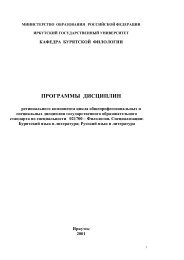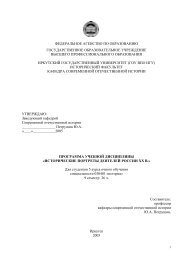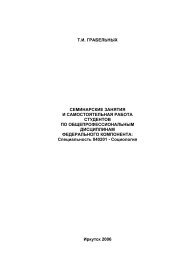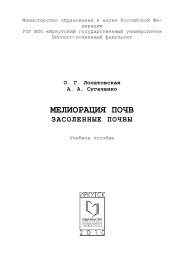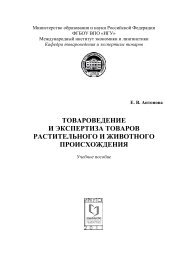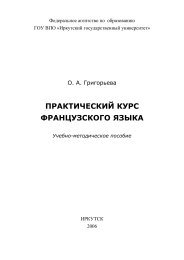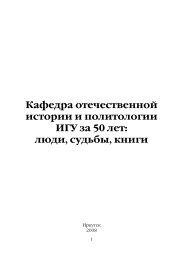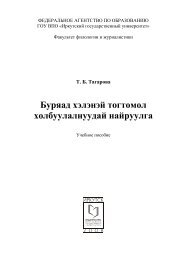Difference-differential Equations with Fredholm Operator in the Main ...
Difference-differential Equations with Fredholm Operator in the Main ...
Difference-differential Equations with Fredholm Operator in the Main ...
Create successful ePaper yourself
Turn your PDF publications into a flip-book with our unique Google optimized e-Paper software.
✻<br />
✬<br />
✗<br />
✖<br />
✫<br />
x 0 1<br />
ω<br />
∂<br />
✩<br />
✔<br />
✕<br />
✪<br />
✲<br />
Fig. 2. The doma<strong>in</strong> <strong>in</strong> <strong>the</strong> remark<br />
2) We now consider <strong>in</strong>itial value problem for difference equation of first order<br />
B(u(x + 1) − u(x)) + Au = f(x), (19)<br />
(I − P )u| x=0 = u 0 , P u 0 = 0. (20)<br />
Here operators B, A satisfy condition 1, were A 1<br />
def<br />
= A, x ∈ Ω = {0, 1, 2, . . .}.<br />
We look for <strong>the</strong> solution of (19) <strong>in</strong> <strong>the</strong> follow<strong>in</strong>g form<br />
u(x) = Γv(x) + (C(x), Φ).<br />
Accord<strong>in</strong>g to results of paragraph 3 <strong>the</strong> problem (19)-(20)can be reduced to follow<strong>in</strong>g<br />
problems:<br />
v(x + 1) − v(x) + AΓv(x) = (I − Q)f(x), (21)<br />
v| x=0 = Bu 0 (22)<br />
A B (C(x + 1) − C(x)) + A ′ 1C(x) =< f(x), Ψ > . (23)<br />
and it follows from (20) that <strong>the</strong>re is no boundary condition on C(x).<br />
By <strong>in</strong>itial value (22) one easily arrives at <strong>the</strong> next solution<br />
x−1<br />
v(x) = (I − AΓ) x ∑<br />
Bu 0 + (I − AΓ) x−ν−1 (I − Q)f(ν),<br />
ν=0<br />
under x = {1, 2, . . .}.<br />
Based on lemma 1 coefficients of <strong>the</strong> vector C(x) are def<strong>in</strong>ed from <strong>the</strong> split recurrent<br />
sequence<br />
C ipi (x) =< f(x), ψ (1)<br />
i >,<br />
C ipi −s(x) =< f(x), ψ (s+1)<br />
i > −(C ipi −s+1(x + 1) − C ipi −s+1(x)), s = 1, p i − 1, i = 1, n.<br />
So <strong>the</strong> conditions of <strong>the</strong>orem 3 for problem (19)-(20) are satisfied and it has unique<br />
solution.<br />
9




